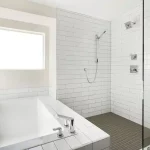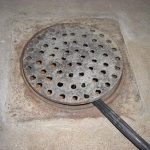If you’re constantly hearing the sound of running water in your toilet, it’s likely that there’s an issue with your toilet set up and water supply line. This can be a frustrating problem to deal with, as it can lead to wasted water and a higher water bill. However, there are several DIY solutions that you can try to fix the issue.
One of the main reasons for running water in your toilet is an improperly adjusted float height inside the toilet tank. Other common causes include a leaky flapper and a lengthy refill tube. Fortunately, adjusting the float height, replacing the flapper, or shortening the refill tube can all be done easily and without the need for an expert plumber in most cases. With these simple solutions, you can put an end to the sound of running water and ensure that your toilet is functioning properly once again.
Why Does It Sound like Water is Constantly Running?
If you hear the sound of running water in your home, it can be due to multiple reasons that you must investigate to find and fix it as soon as possible. Running water can not only lead to high water bills but also cause further damage to your plumbing system. Here are some possible reasons why you might hear the sound of running water:
Improperly Adjusted Float Inside the Toilet Tank:
The float inside the toilet tank controls the water height and flow. If the float is not in its original position, water will continuously run through the pipes, and you will hear continuous sounds. The float works to refill the tank and also stop the overflow. With years of use, the float might become weary or get damaged. Thus, it will be unable to stop the water flow, and water will continuously run into the toilet tank through the water supply line.
A Leaky Toilet Flapper:
If the problem isn’t with the float, check the toilet flapper. A toilet flapper is designed to seal the toilet flush valve. When it gets damaged, it won’t control released water flow in the toilet bowl. So, a leaky flapper is one of the main causes of running or leaking toilets. You can identify this problem with some blue colors with ease. You need to add some blue colors inside the toilet tank and wait for an hour. If the toilet flapper is damaged, the blue color will run with the water into the toilet bowl. Consequently, the standing water in the toilet bowl will turn blue. This way, you can easily identify a damaged flapper even without removing it.
An Elongated Refill Tube:
Another common cause of a running toilet can be the elongated refill tube of the toilet. The tube connects the overflow tube and fills the valve inside the toilet tank. When it is too long, it won’t stop the toilet bowl’s overflow, so you will hear water running in pipes but no leak. Although it can be worrisome, you can easily deal with the problem. Moreover, at times, the refill tube might get damaged or fall off, and then it will fail to deliver adequate water pressure for the flush to work properly. This scenario is the opposite of running water into the toilet.
Leakage in the Slab of the Water Heater:
If you hear running water noises close to the water heater, it indicates that the slab has become leaky. Yes, it is normal to hear the sound of water running through pipes close to the water heater slabs when the heater is on and turning cold water into hot water. But, when you still hear running water sound when the water isn’t turned on, the problem is definitely with the slabs.
How to Stop Your Toilet from Constantly Running
Toilet running is a common problem that can lead to water wastage and increased utility bills. Here are some methods to help you fix the issue:
Method 1: Adjust the Float
The most common reason for water running through the pipes and overflowing the toilet tank is an improperly positioned float. To fix this, you need to adjust the height of the float inside the tank. Follow these steps:
- Empty the toilet tank.
- Access the screws that hold the float against the flush tube inside the tank.
- Use a screwdriver to tighten or loosen the screw until the float is adjusted at the right height.
- If your toilet has a column float, loosen the screws and apply mild pressure on the float to push it down until it is positioned correctly. Then, tighten the screw.
Method 2: Fix the Leaky Flapper
If the cause of running water inside the toilet is a leaky flapper, you need to replace it. Follow these steps:
- Turn off the main water supply line and flush the toilet to empty the tank.
- Detach the chain from the old flapper.
- Remove the pins on the overflow tube sides that connect the flapper and pry off the old flapper.
- Connect the chain with the new flapper and attach the flapper with the pins.
- If the chain is too long, shorten it to get a leak-proof better seal.
Method 3: Shorten the Toilet Refill Tube
When the refill tube inside the toilet tank is too long, it can overflow the tank and the bowl without stopping the water. To fix this, you can shorten the tube within minutes. Follow these steps:
- Drain the toilet tank completely and shut off the supply line.
- Access the overflow valve and pull out the refill tube from there.
- Get the refill tube above the opening and cut the excess part of it with cutting pliers.
- Cut the tube into tiny parts to not over-shorten the tube.
- Push it down and connect it with the overflow tube clips to hold the refill tube securely.
Is it Normal to Hear Water Running Through Pipes?
Yes, it is normal to hear the noise of running water through the pipes as it travels from the main supply point to different faucets, showers, and other points. Plumbers left the drainpipe exposed in older homes, so this scenario is more common in older houses. Even in modern homes, you will hear a running water sound when the water heater heats the cold water.
Remember, if none of these methods work, you may have a more severe problem, and you may need to call a professional plumber.
Final Words
Maintaining your plumbing system is crucial to avoid unnecessary repairs and high utility bills. If you notice that your toilet is constantly running, it could be due to a leaky toilet flapper, an elongated refill tube, or improper positioning of the float. These issues can be fixed easily without the help of a professional plumber. However, if you suspect that the problem is with the leaky slabs of the water heater, it is best to call for a professional plumber to fix it. Remember, regular maintenance can prevent wear and tear on your plumbing system and save you money in the long run. If you are unsure about any plumbing issue, it is always best to consult a technician.





